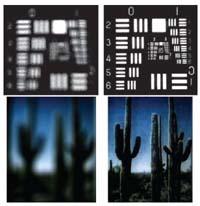To see both the remote and the nearby

In fact, over the years, the outer layer of the eye loses flexibility, making it difficult to change focus from distant objects to the nearest ones. To fix it people use double focus glasses. To see the next objects you have to look at the bottom of the lens and the upper one to see the distant ones.
These glasses are not today, XVIII. It was invented by Benjamin Franklin in the twentieth century. But they have the drawback that the line separating the two lenses is very evident and aesthetically not beautiful. In addition, you have to move your eyes up and down, at what distance is what you want to see. This generates headache and fatigue for many.
At present there are progressive glass glasses in which the separation between parts of lenses is not appreciated. In addition, to be able to see it from far to near, they have several lenses followed, all together, so that they are useful to differentiate those that are at an intermediate distance.
But in disagreement with it, the researchers have continued to work in search of glasses that approach automatically. Now it seems they have met their goal at the University of Arizona.
Electronic liquid crystal glass

The look of the glasses is not very attractive, but the glass is really good for those who have visual fatigue. (Photo: University of Arizona )
It is evident that the researchers have made more effort in optics than in design, since the glasses are not very good. Yes, the crystals are really special, since they have the ability to adapt the focus. To achieve this, between two layers of simple glass, they have another liquid crystal. This central layer, on the other hand, has tiny transparent electrodes in concentric circles, which are responsible for controlling the optical characteristics of the crystal.
The liquid crystal is semi-solid, semi-liquid, and the configuration of the molecules that form it changes when applying electric current. Researchers have used this feature to obtain the desired configuration using a small electric current. This way, when the glasses are off, they serve to see him at a distance and when they are on, to see him nearby.

To the left is the image nearby with the glasses off. Right when they are on. (Photo: U. Arizona)
In the University, numerous tests have been carried out both through the computer and people, with very satisfactory results. Therefore, they are thinking of marketing it and have already taken the first steps to go out to the street.
However, they intend to further improve the crystals to function as the autofocus functions of the photographic cameras. Customers can have enough. To see if besides being good, they manage to be cheap and beautiful!
Published in Deia.
Buletina
Bidali zure helbide elektronikoa eta jaso asteroko buletina zure sarrera-ontzian











